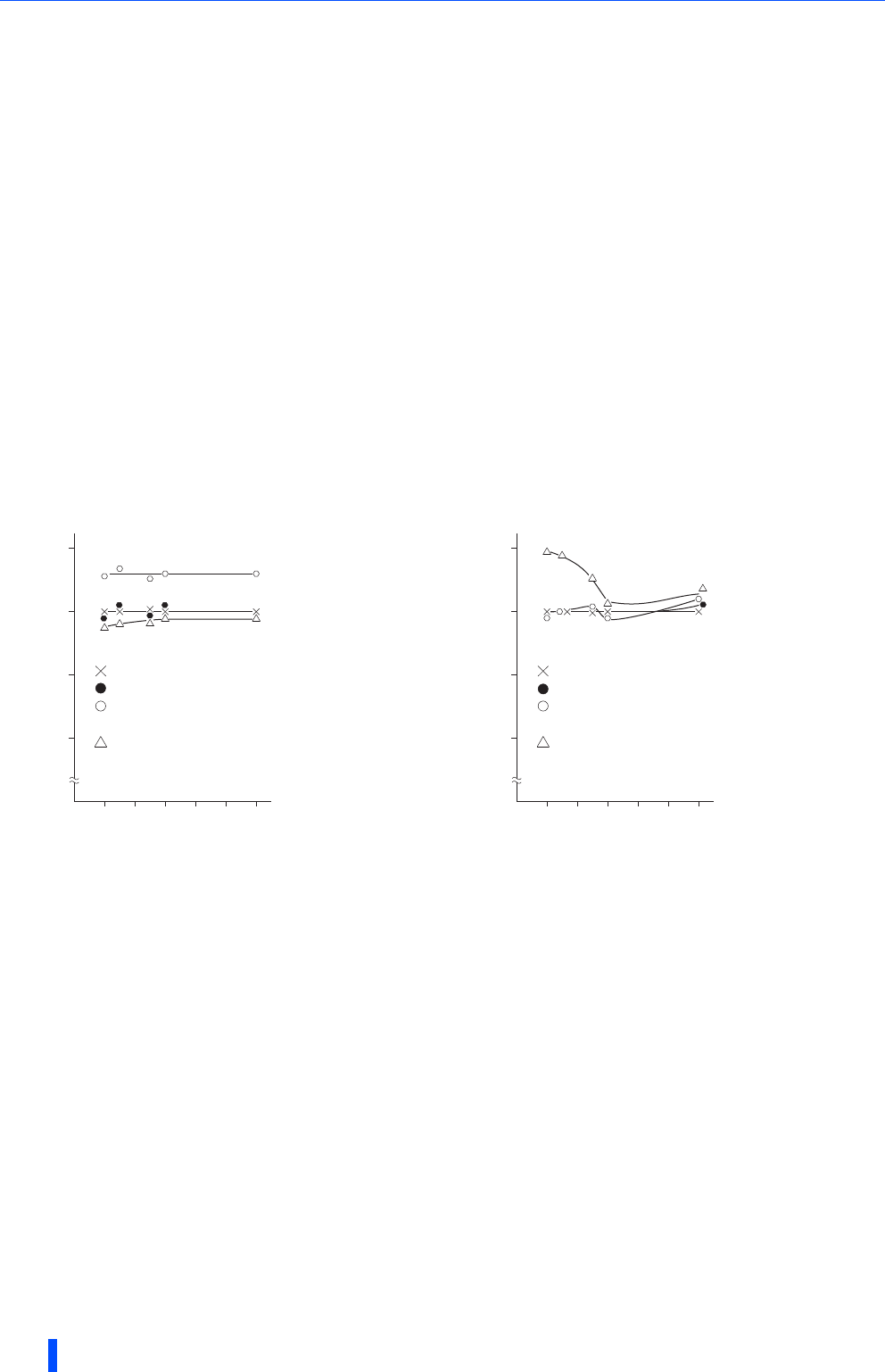
Measurement of main circuit voltages, currents and powers
94
PRECAUTIONS FOR MAINTENANCE AND INSPECTION
Use an FFT to measure the output voltage accurately. A tester or general measuring instrument cannot measure accurately.
When the carrier frequency exceeds 5 kHz, do not use this instrument since using it may increase eddy current losses produced in metal parts
inside the instrument, leading to burnout. In this case, use an approximate-effective value type.
When the setting of Pr.195 ABC1 terminal function selection is the positive logic
A digital power meter (designed for inverter) can also be used to measure.
5.2.1 Measurement of powers
Use a digital power meter (for inverter) for the input side of the converter unit (FR-CC2) and the output side of the inverter.
Alternatively, measure using electrodynamic type single-phase wattmeters for the input side of the converter unit and output
side of the inverter in two-wattmeter or three-wattmeter method. As the current is liable to be imbalanced especially in the
input side, it is recommended to use the three-wattmeter method.
Examples of measured value differences produced by different measuring meters are shown below.
An error will be produced by difference between measuring instruments, e.g. power calculation type and two- or three-
wattmeter type three-phase wattmeter. When a CT is used in the current measuring side or when the meter contains a PT on
the voltage measurement side, an error will also be produced due to the frequency characteristics of the CT and PT.
5.2.2 Measurement of voltages and use of PT
Converter unit (FR-CC2) input side
As the input side voltage has a sine wave and it is extremely small in distortion, accurate measurement can be made with an
ordinary AC meter.
Inverter output side
Since the output side voltage has a PWM-controlled rectangular wave, always use a rectifier type voltmeter. A needle type
tester cannot be used to measure the output side voltage as it indicates a value much greater than the actual value. A moving-
iron type meter indicates an effective value which includes harmonics and therefore the value is larger than that of the
fundamental wave. The value monitored on the operation panel is the inverter-controlled voltage itself. Hence, that value is
accurate and it is recommended to monitor values (analog output) using the operation panel.
PT
No PT can be used in the output side of the inverter. Use a direct-reading meter. (A PT can be used in the input side of the
converter unit (FR-CC2).)
[Measurement conditions]
Constant output of 60 Hz or more frequency with a constant-
torque (100%). The value obtained by the 3-wattmeter
method with a 4-pole 3.7 kW induction motor is assumed to
be 100%.
Example of measuring inverter input power
[Measurement conditions]
Constant output of 60 Hz or more frequency with a constant-
torque (100%). The value obtained by the 3-wattmeter
method with a 4-pole 3.7 kW induction motor is assumed to
be 100%.
Example of measuring inverter output power
3-wattmeter method (Electro-dynamometer type)
2-wattmeter method (Electro-dynamometer type)
Clip AC power meter
(For balanced three-phase load)
Clamp-on wattmeter
(Hall device power arithmetic type)
0 20 40 60 80 100120Hz
60
80
100
120
%
3-wattmeter method (Electro-dynamometer type)
2-wattmeter method (Electro-dynamometer type)
Clip AC power meter
(For balanced three-phase load)
Clamp-on wattmeter
(Hall device power arithmetic type)
0 20 40 60 80 100120Hz
60
80
100
120
%


















